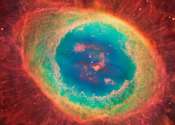Researchers explain visible light from 2-D lead halide perovskites
Researchers drew attention three years ago when they reported that a two-dimensional perovskite—a material with a specific crystal structure—composed of cesium, lead and bromine emitted a strong green light. Crystals ...








